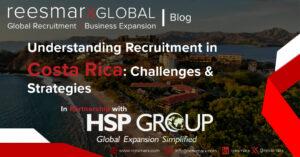We know that there are essential requirements that make a candidate qualified for a position. A potential hire is evaluated based on education, experience and personal and professional references that validate the quality of work they are capable of accomplishing for an employer. But the S.T.A.R. technique is used to drill down further into the core competencies of a hire, to see how the fundamental skills may be applied, in different situations.
The situation, task, action and result (S.T.A.R.) format is used to test the response of the candidate in conventional as well as unpredictable situations within the workplace. The four aspects are thought to provide a level of predictable forecasting on the professional ability to handle difficult tasks, commitment to professional development, and career growth.
1. Situation
The interviewer will ask you to share a situation or challenge that the candidate has experienced recently in the workplace. When choosing a situation example, it is important to pick a complex one that allows you room to explain how your skills were challenged, and why it was an exceptional opportunity to apply yourself to the resolution of a problem or successful execution of a project.
2. Task
The task objective is simple; outline concisely what the project was and why it was assigned to you to complete. Share with the interviewer the details including deadlines, resources required and other aspects of the assignment. Was the task part of your normal responsibilities, or was it a particularly unique situation that required extra effort that resulted in personal growth?
3. Action
The action aspect of the S.T.A.R. interview, is to explain in detail the steps you took to plan, collaborate and address the challenge. What resources did you have to acquire to meet the objective? If you worked on the project with other members of your team, explain your role and what the experience was like, if multiple employees were involved. This is a good opportunity to demonstrate your ability to work independently, but also with a group.
4. Result
This is the section of the interview where job candidates can give themselves credit, where credit is due. Explain how the challenge was met and the obstacle was overcome, as well as recognition that you were provided with by your employer for exceptional performance. In this part of the interview, it is also recommended to share how you personally felt about the success of the project, and how you grew as a professional by overcoming the challenge.
Be Honest About Your Performance
A successful interview is not only about sharing the favorable, successful aspects of your career and job experience. Interviewers and recruiters know that work can be challenging, and that mistakes and oversights can happen. What they want to know most, is how you as an individual cope with setbacks, stress, deadlines and communication when you are challenged in the workplace. Those insights will tell them virtually everything they need to know to match you to a position and employer for a good mutual, professional fit.






